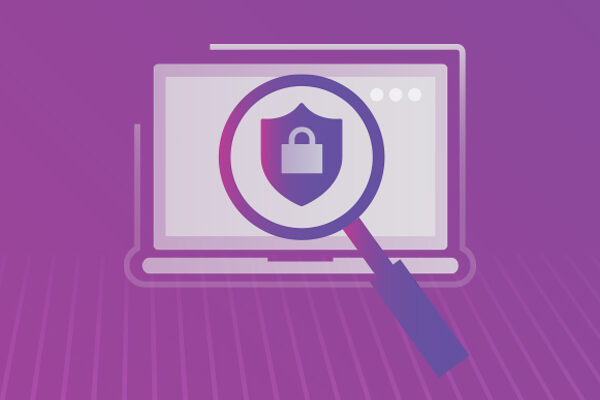What is a Zero-Day Vulnerability?
Hackers in today’s advanced threat landscape are increasingly focusing on leveraging zero-day vulnerabilities to infiltrate systems and cause significant damage. These vulnerabilities are especially concerning for organizations because they represent unknown and unpatched weaknesses in software that attackers can exploit before anyone is aware of their existence. This unpredictability makes zero-day vulnerabilities a severe threat that requires immediate attention.
In this blog, we’ll define zero-day vulnerabilities, show a few examples of how they are exploited in business today and provide best practices for your company to defend against them. Additionally, we’ll highlight how solutions like Datto AV and Datto EDR are purpose-built to help prevent zero-day attacks from becoming a problem.
What is a zero-day vulnerability?
A zero-day vulnerability is a software flaw that is unknown to the vendor and thus has no available fix at the time it is discovered. These vulnerabilities have earned their moniker because the vendor has “zero days” to fix the flaw before malicious actors can exploit it. They differ from other cybersecurity threats due to their novelty and element of surprise, making them particularly dangerous.
Zero-day vulnerabilities often lead to zero-day exploits and zero-day attacks, which are explained below:
Zero-day vulnerability: A flaw in software that is unknown to the vendor. This lack of awareness means the vendor cannot create a patch or update to fix the flaw, leaving systems exposed to potential exploitation.
Zero-day exploit: The method used by attackers to take advantage of a zero-day vulnerability. This can include various techniques, such as injecting malicious code, gaining unauthorized access or manipulating system functions, to achieve their goals.
Zero-day attack: An attack that uses a zero-day exploit to compromise a system. These attacks are particularly dangerous because they occur before the vendor has a chance to address the vulnerability, often leading to significant damage.
Why are zero-day attacks dangerous and what is their impact?
Zero-day attacks are a growing concern in the cybersecurity landscape for several reasons. They are notoriously difficult to defend against due to their unknown nature and the critical time window between discovery and patch release. Here’s why zero-day attacks are particularly dangerous:
- Unknown vulnerabilities: Zero-day vulnerabilities are unknown to both the software vendor and users, making them extremely hard to detect and defend against. Because there is no awareness of the vulnerability, traditional defenses, such as antivirus programs and firewalls, are often ineffective.
- Exploitation window: There is a critical period between when the vulnerability is discovered by attackers and when a patch is released. During this window, systems are highly vulnerable. Attackers can exploit the vulnerability with impunity, knowing that defenses are not yet prepared to address the threat.
- Challenges in detection and mitigation: Zero-day attacks often lack signatures and use advanced evasion techniques, making them difficult to detect. These attacks can bypass traditional security measures by masking their activities or mimicking legitimate operations, making timely detection a significant challenge. The reactive nature of patching also poses significant challenges, as organizations must scramble to update their systems once a patch is available.
The impact of zero-day attacks can be severe, leading to:
- Data breaches: Zero-day exploits can lead to significant data breaches, compromising sensitive information. Attackers can steal personal data, financial information, intellectual property and other valuable assets, leading to severe consequences for individuals and organizations.
- Financial losses: The financial impact can be substantial, including costs related to data recovery, legal fees and regulatory fines. Businesses may also face expenses related to incident response, system repairs and compensation for affected customers.
- Reputation damage: The long-term damage to an organization’s reputation and customer trust can be profound. Customers may lose confidence in the organization’s ability to protect their data, leading to a loss of business and a tarnished brand image.
- Operational disruption: Zero-day attacks can disrupt business operations, leading to downtime and productivity losses. Systems may be rendered inoperable, critical services may be interrupted and business processes may be halted, resulting in significant operational challenges.
How zero-day vulnerabilities lead to zero-day attacks
Zero-day vulnerabilities are discovered by attackers before the vendors, making them hard to defend against. The lifecycle of a zero-day threat is as follows:
- Discovery: Attackers discover a vulnerability before the vendor is aware of it. This discovery can occur through various means, such as reverse engineering software, identifying flaws during penetration testing or uncovering weaknesses through routine scanning.
- Exploitation: Attackers create and deploy exploits to take advantage of the vulnerability. This can involve developing custom malware, leveraging existing exploit kits or utilizing social engineering techniques to deliver the exploit to the target system.
- Detection: Security researchers or vendors identify the exploit. This may occur through monitoring network traffic, analyzing suspicious activities or investigating reports from affected users. Once detected, efforts are made to understand the exploit and its impact.
- Mitigation: The vendor develops and releases a patch to fix the vulnerability. This process involves identifying the root cause of the vulnerability, developing a solution and distributing the patch to affected systems. Users must then apply the patch to protect their systems.
Attackers use this process to compromise systems and data, often causing significant damage before the vulnerability can be patched.
Who are targets for zero-day attacks?
Zero-day attacks can target a wide range of organizations and individuals. Common targets include:
- Large enterprises and corporations: These organizations often hold vast amounts of sensitive data, making them attractive targets. They may possess financial records, intellectual property, customer data and other valuable assets that attackers seek to exploit.
- Government agencies: Government systems can contain critical information and infrastructure, making them high-value targets. Attacks on government agencies can disrupt national security, public services and diplomatic activities.
- Financial institutions: Banks and other financial institutions are prime targets due to the financial data they hold. Successful attacks can lead to theft of funds, fraud and significant financial losses for both the institution and its customers.
- Healthcare organizations: Medical records are valuable, and healthcare systems are often targeted for their sensitive patient data. Attacks on healthcare organizations can disrupt patient care, compromise patient privacy and lead to regulatory fines.
- Educational institutions: Schools and universities can be targeted for both research data and personal information. Attacks can disrupt academic activities, compromise student and staff data and affect research projects.
- Noteworthy individuals: High-profile individuals, including executives and celebrities, can be targets for personal data and credentials. Attacks can lead to identity theft, financial fraud and reputational damage.
Examples of zero-day attacks
Here are a few notable examples of zero-day attacks:
Chrome zero-day vulnerability (CVE-2024-0519)
In 2024, a zero-day vulnerability was discovered in Google Chrome. This security flaw originated from a memory corruption bug within the V8 JavaScript engine, which is integral to Chrome’s operation. The vulnerability specifically affected Google Chrome web browsers, allowing attackers to exploit this flaw to execute arbitrary code. Such exploitation posed significant risks, potentially compromising user data and undermining system integrity.
Upon discovering the issue, Google promptly responded by releasing a security update designed to patch the vulnerability and users were advised to update their Chrome browsers immediately.
MOVEit Transfer zero-day attack (CVE-2023–42793)
In May 2023, a zero-day vulnerability was exploited in MOVEit Transfer, a managed file transfer software. This vulnerability allowed attackers to use methods such as Remote Code Execution (RCE) and Authentication Bypass. Exploits of the vulnerability led to data breaches, financial losses, and operational disruptions for the affected organizations.
In response, security teams promptly investigated the incident, reported the vulnerability, and implemented mitigation measures. The vendor then released patches to address the vulnerability but the incident underscored the critical importance of maintaining proactive security practices.
How to identify zero-day vulnerabilities
Detecting zero-day vulnerabilities is crucial for protecting systems and data. Key detection methods include:
- Behavioral analysis: Monitoring for unusual behavior that may indicate an exploit. This involves analyzing patterns of activity that deviate from normal operations, such as unexpected network traffic or unauthorized access attempts.
- Heuristic analysis: Using algorithms to identify patterns that suggest a zero-day attack. Heuristic analysis involves examining code and system behavior to identify characteristics of known exploits or suspicious activities.
- Signature-based detection: Comparing known attack signatures to detect anomalies. This method relies on a database of known malware signatures and can identify previously detected threats but may struggle with novel exploits.
- Machine learning (ML) and AI: Leveraging AI to detect previously unknown threats through pattern recognition. Machine learning models can analyze vast amounts of data to identify subtle indicators of compromise and adapt to new threats over time.
- Threat intelligence: Gathering and analyzing information about potential threats from various sources. Threat intelligence involves collecting data from cybersecurity communities, industry reports and other sources to stay informed about emerging threats and vulnerabilities.
How to prevent zero-day attacks
Preventive measures are essential for protecting against zero-day attacks. Listed below are some effective strategies.
Regular software updates and patch management
Ensuring all software is up to date with the latest security patches. Regularly updating software helps close known vulnerabilities and reduce the risk of exploitation.
Network segmentation
Dividing the network into segments to limit the spread of an attack. By isolating critical systems, organizations can contain potential breaches and prevent attackers from accessing the entire network.
Application whitelisting
Allowing only approved applications to run on the network reduces the attack surface by preventing unauthorized or malicious software from executing.
Intrusion detection and prevention systems (IDS/IPS)
Detecting and preventing malicious activity. IDS/IPS solutions monitor network traffic for suspicious behavior and can automatically block or mitigate potential threats.
Endpoint protection solutions
Using tools like Datto AV and Datto EDR to protect endpoints. These solutions provide comprehensive security for devices, including antivirus, firewall and threat detection capabilities.
Antivirus software
Employing robust antivirus solutions to detect and mitigate threats. Antivirus software can identify and remove known malware, providing an additional layer of defense against zero-day attacks.
How can Datto help?
Datto offers advanced solutions like Datto AV and Datto EDR to help prevent zero-day attacks. These tools have proven to be highly effective, as highlighted by an independent study from Miercom.
The study revealed that “Both Datto EDR and Datto AV achieved a 98% detection rate for zero-day threats, which is more than double the industry average for products in this class of 45%.”
Datto AV and Datto EDR offer the following features to help protect against zero-day threats:
- Real-time threat detection: Identifies and mitigates threats as they occur. This feature allows for immediate response to potential attacks, minimizing damage and preventing the spread of malware.
- Advanced behavioral analysis: Detects unusual activity that may indicate an attack. By continuously monitoring system behavior, Datto solutions can identify deviations from normal operations and flag potential threats.
- Comprehensive endpoint protection: Protects all endpoints in the network from potential threats. Datto AV and Datto EDR provide robust security for devices, ensuring that vulnerabilities are addressed and threats are mitigated.
To learn more about securing your endpoints, check out this recorded session on Locking Down Your Endpoints From Advanced Attack today.
Prevent zero-day attacks with Datto AV and Datto EDR
Zero-day vulnerabilities pose a significant threat to organizations due to their unknown nature and the difficulty in defending against them. By understanding what zero-day vulnerabilities are, how they are exploited and the impact they can have, organizations can better prepare and protect themselves. Solutions like Datto AV and Datto EDR are designed to provide robust protection against these threats, ensuring that your organization remains secure.
Request a demo of Datto AV and Datto EDR today to see how these powerful tools can help you prevent zero-day attacks and protect your critical data.




